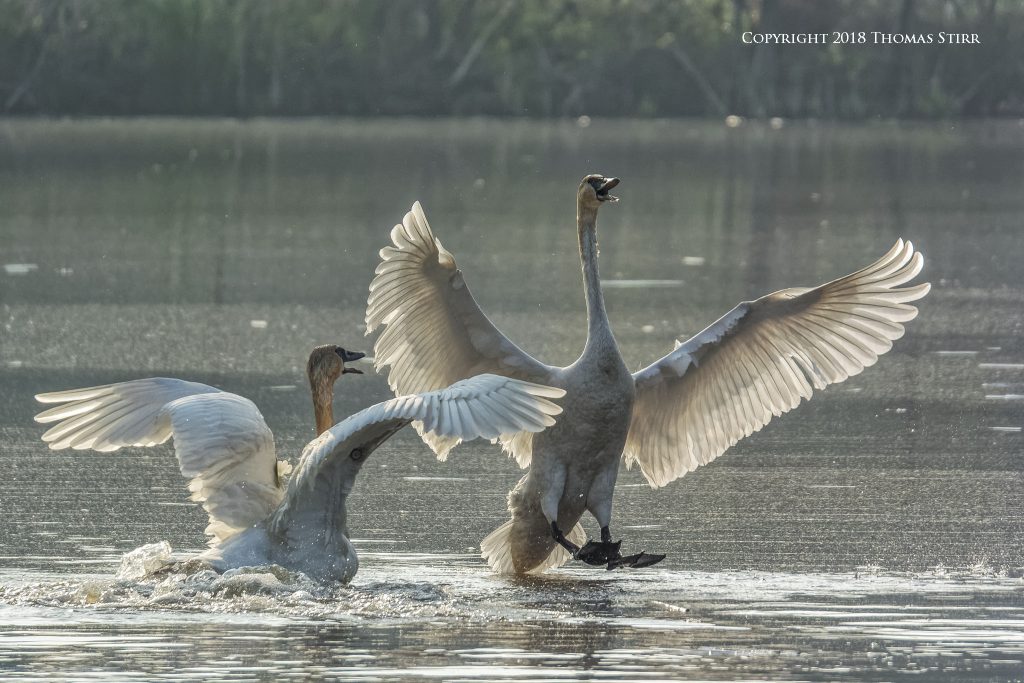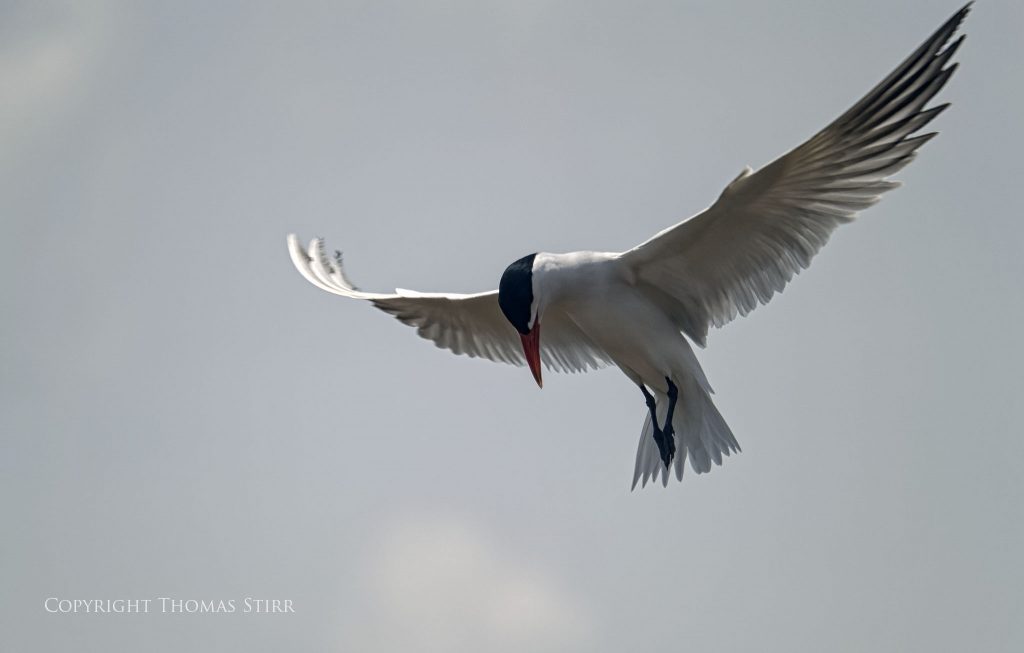I’ve had a number of readers who are intending to add some Nikon 1 gear to their kit contact me by email the past day or two. Many of them specifically asked about the Nikon 1 V3 versus the V2 for photographing birds in flight.
NOTE: Click on images to enlarge.

Since I have not used any of my Nikon 1 V2s to photograph birds in flight since I bought my first Nikon 1 V3 about 18 months ago, I thought it was important to reassess the two cameras before answering specific reader questions.

Regular readers of my photography blog will have noticed that I’ve been shooting a lot of bird photography for the past several months. This has been part of the field work that I’ve been doing for an upcoming eBook on bird photography. This has allowed me to sharpen up my skills using the Nikon 1 V3.

I went out today with one of my Nikon 1 V2s and a 1 Nikon CX 70-300 mm f/4.5-5.6 with the specific intent of capturing a few images I could use in this article. What follows is a mix of bird in flight images taken with either the V3 or V2 along with some commentary about using these two cameras for this specific photographic subject. Certainly either camera is capable of capturing good, solid images of birds in flight. Each camera has its advantages as well as challenges in accomplishing that task. What follows are my impressions and comparisons of the two cameras.

I should mention that I shot my Nikon 1 V2 today using the same camera settings that I typically use with my V3. I shot in Manual mode, Auto ISO 160-6400, continuous auto-focus (AFC), with subject tracking, matrix metering, vibration reduction turned off, auto white balance, and the auto-focus setting on the lens set to Full. Most of the time I shoot my V3 using a 10 frame-per-second frame rate, although I will mix this up from time to time and shoot at 20 frames-per-second depending on subject matter and my objective with the AFC run. I shot my V2 today using its 15 frame-per-second frame rate.

Continuous Auto-Focus Performance
If the choice of cameras for shooting birds in flight between the Nikon 1 V3 and V2 was made solely on continuous auto-focus performance, the V2 would win hands down. I was actually quite surprised today with how much faster and more accurate my V2 felt compared to shooting with a V3. This was true in both lower light and bright sunlight conditions. The Nikon 1 V2 acquires focus quicker and held it more consistently than does a V3. The CX 70-300 mm hunts for focus noticeably more when mounted on a V3 than when on a V2. Plus, when a V3 misses focus – it tends to really blow it which can lead to more missed image opportunities.

To compensate for this I always try to pre-focus my Nikon 1 V3 whenever possible. This really helps to reduce the risk of the CX 70-300 zoom hunting for focus and missing a bird in flight shot. No doubt other photographers think I’m crazy when they have their cameras raised up tracking an incoming bird, and they see me with my V3 pointed at some trees or some other object so I can pre-focus the CX 70-300 lens before photographing the incoming bird, and I’m totally ignoring that incoming bird at that moment.
Auto-Focus Performance – Advantage Nikon 1 V2

Handling and External Controls
The Nikon 1 V3 is the clear winner here with more external controls and better overall ergonomics. I seldom make any significant changes to my basic camera settings when I’m out photographing birds in flight. Typically the only thing I adjust is my shutter speed, to ensure I don’t over exposure an image, or get wing blur from too slow of a shutter speed. As a result the external controls on a camera aren’t as important to me personally when shooting birds in flight.

Other folks, who shoot in Shutter Priority or Aperture Priority when photographing birds in flight, would find the handling and external controls on the Nikon 1 V3 more important than I would. This would also be increased if they regularly change their metering mode, or frequently use exposure compensation or change white balance.
Handling and External Controls – Advantage Nikon 1 V3

Low Light Performance.
With their small sensors neither the Nikon 1 V3 or V2 are stellar when it comes to low light performance. The V3 noticeably struggles more to acquire focus in lower light than does a V2. From an image noise standpoint I’d rate both cameras at about the same level. Using PRIME noise reduction in DxO PhotoLab does a very good job with RAW files from either camera. There is a difference between the Nikon 1 V3 and V2 when it comes to comparing their manufacturer stated ISOs (i.e. the ISO setting on your camera) to actual measured ISO with the V2 being more accurate.

DxOMark test scores show some interesting differences.
- At manufacturer stated ISO-800 a Nikon 1 V3 is actually shooting at ISO-454 while a V2 is actually shooting at ISO-619
- At manufacturer stated ISO-1600 a Nikon 1 V3 is actually shooting at ISO-907 while a V2 is actually shooting at ISO-1236.
- At manufacturer stated ISO-3200 a Nikon 1 V3 is actually shooting at ISO-1750 while a V2 is actually shooting at ISO-2416.
- At manufacturer stated ISO-6400 a Nikon 1 V3 is actually shooting at ISO-3576 while a V2 is actually shooting at ISO-4973
This means that there is about a 2/5 of a stop advantage with a V2 in terms of accuracy between manufacturer stated and measured ISO.
Low Light Performance – Advantage Nikon 1 V2

Frame Rate and Buffer Size
The Nikon 1 V3 provides continuous auto-focus at 10 frames-per-second and 20 frames-per-second, compared to the Nikon 1 V2 which has 5 frames-per-second and 15 frames-per-second in continuous auto-focus. Both cameras can be shot at 30 frames-per-second and 60 frames-per-second when the first frame locks focus for the balance of the run. Both cameras have a buffer of 40 RAW/Jpeg Fine images. Whether a photographer prefers the V3 or V2 will really depend on the type of bird in flight subjects they photograph and the potential impact that rhythmic motion may have on the variety of images the frame rate produces.

Usable frame rate is also impacted by continuous auto-focus accuracy and the direction of the bird-in-flight. For example, many cameras struggle maintaining good continuous auto-focus performance when a bird is flying towards the camera. Shooting at fast frame rates in this type of situation challenges a camera further. Given the continuous auto-focus performance of a Nikon 1 V3, I typically shoot at 10 frames-per-second and mainly use 20 frames-per-second when I am pretty confident that I can shoot at right angles to the bird in flight.

The higher density sensor of the V3 seems to be more challenged with continuous auto-focusing, especially at higher frame rates. The V2 seems to handle its 15 frames-per-second shooting speed well in a wider range of bird in flight situations. While shooting at a slower maximum continuous auto-focus frame rate than the V3, the V2 does so on a more reliable basis.
Frame Rate and Buffer Size: Advantage Nikon 1 V2
Memory Card Speed
Since the Nikon 1 V2 uses standard SD cards, rather than micro-SD cards, users can take advantage of the faster write speeds of SD cards. This allows the camera’s buffer to clear faster, providing potential to capture additional images.
Memory Card Speed Advantage: Nikon 1 V2

Pixels on Subject
Since the Nikon 1 V3 has an 18.4 MP sensor compared to the V2’s 14.2 MP sensor, the V3 wins the pixels on subject comparison easily. This gives a V3 user an advantage in terms of more cropping latitude than a V2 user by about 12%. This additional ‘image real estate’ does come into play on a regular basis and is an important advantage for the V3.
Pixels on Subject – Advantage V3.
Overall Assessment
For people looking to buy either a Nikon 1 V2 or V3 specifically to shoot birds in flight with a 1 Nikon CX 70-300 mm f/4.5-5.6 zoom lens, the Nikon 1 V2 is a better choice in my experience. Continuous auto-focus is quicker and more reliable and the 15 frames-per-second AF-C shooting rate is solid and effective. Low light performance is a bit better than that of the V3. In addition, since the Nikon 1 V2 uses SD cards rather than micro-SD, faster cards can be used.

That’s not to say that the Nikon 1 V3 cannot be a very good camera to shoot birds in flight. It can be very effective, but the camera is finicky with auto-focus performance, requiring some adjustments to shooting technique which can take some time to develop. The V2 on the other hand feels like an old, reliable friend that isn’t so moody.
People who want a DSLR-like shooting experience will be much happier with a Nikon 1 V3. They will also appreciate the added potential for image cropping because of the 18.4 MP sensor.
Note to Readers regarding the Nikon 1 V1:
I’ve been advised by a couple of readers that it has been reported that I once owned a Nikon 1 V1. This is untrue. I have never even held a Nikon 1 V1 in my hands. I did not include any commentary about that particular camera in this article as I have no first-hand experience with it.

Technical Note:
All photographs were captured hand-held in available light using Nikon 1 gear as per the EXIF data. Images were produced from RAW files using my standard process of DxO PhotoLab, CS6 and the Nik Collection.
If you enjoyed this article and would like to learn more about the Nikon 1 system, you may want to have a look at our eBook, The Little Camera That Could. It illustrates the capability of the Nikon 1 system through hundreds of original photographs. There is also commentary and tips about the Nikon 1 system.
Word of mouth is the best form of advertising. If you like our website please let your friends and associates know about our work. Linking to this site or to specific articles is allowed with proper acknowledgement. Reproducing articles or any of the images contained in them on another website is a Copyright infringement.

My intent is to keep this photography blog advertising free. If you enjoyed this article and/or my website and would like to support my work you can purchase an eBook, or make a modest $10 donation through PayPal, both are most appreciated. You can use the Donate button below. Larger donations can be made to tom@tomstirr.com through PayPal.
Article is Copyright 2018 Thomas Stirr. All images are Copyright 2016, 2017, 2018 Thomas Stirr. All rights reserved. No use, duplication or adaptation of any kind is allowed without written consent. If you see this article reproduced anywhere else it is an unauthorized and illegal use. Posting comments on offending web sites and calling out individuals who steal intellectual property is always appreciated!



tom, my 70-300 cx on both my v2 and j5 gets warm at the base of the lens as well as warming the bodies if I leave the cameras on for about 5 minutes. I turned the vr off with the same warming result. Is this warming normal?
I’m not sure if the warming at the base of the lens is normal. I put one of my CX 70-300 on a J5 and turned it on for about 10 minutes and I did not notice any warming. It is common to feel a bit of heat from the battery compartment if a Nikon 1 is used for extended periods of time.
Tom